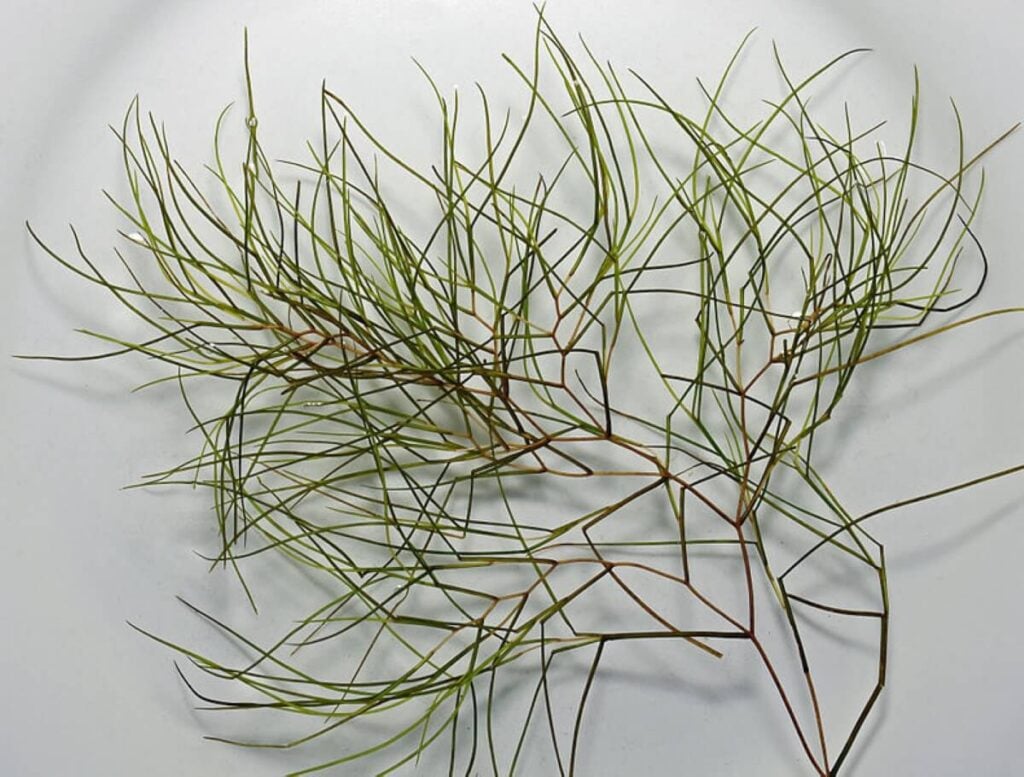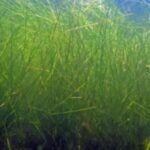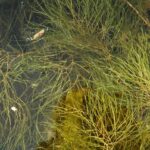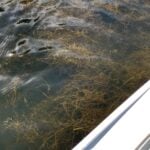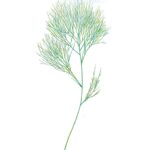Sago Pondweed
Other Common Names: fennel pondweed, fennel-leaf pondweed, comb pondweed, ribbon weed, sago false pondweed
(Potamogeton pectinatus)
Native
Sago pondweed has many thread like submersed leaves that alternate and grow up to six inches long with a sharp point on the end.
Description
Thin stems are five-hundredths of an inch in diameter, up to three feet tall, light green to almost white, and branch plentifully near the top.
Sago pondweed does not produce floating leaves. Submersed leaves are extremely thin and thread like, alternating, up to six inches long, and have a sharp point on the end.
Stipules (small leaves at the base of the regular leaves) are one to two inches long and greenish or whitish.
Flower stalks of sago pondweed can be submersed or floating; the tiny flowers are greenish, spaced out slightly on the stem, and contain four petals.
Sago pondweed can be found around the world. It grows in nearly all types of water, can grow in quite murky water, and may be the last rooted plant surviving in such conditions. A single plant can produce more than 60,000 tiny fruits and 36,000 tubers in six months.
Sago pondweed is a great food source for waterfowl; they eat the seeds and tubers. The tubers are a reserve energy source for the plant, but it can form large mats near the surface of the water looking for light as well.
Management Options
Click here for more information on how to control sago pondweed.
Location
Sago pondweed can be found across the United States.
Propagation
rhizomes with tubers
Management Options
Click here for more information on how to control sago pondweed.

